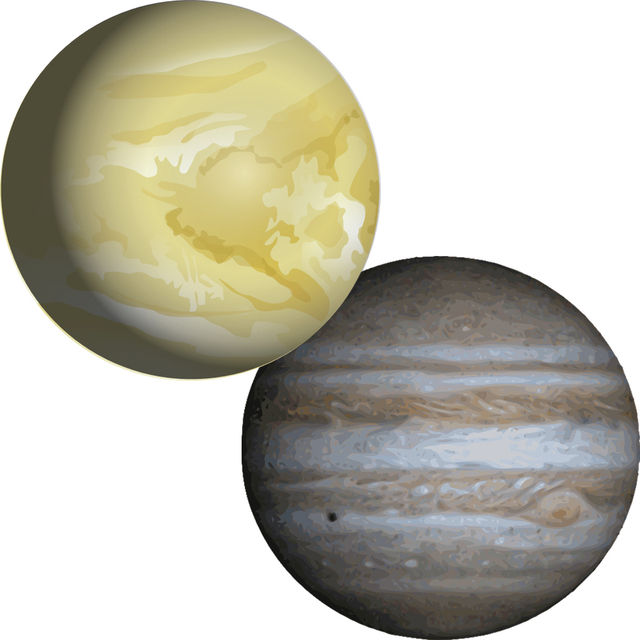LIHUE — Before you retire to bed tonight, you might want to reserve a few moments to gaze up at the sky. Prepare to be dazzled. Two of the brightest planets in the solar system will appear so close as
LIHUE — Before you retire to bed tonight, you might want to reserve a few moments to gaze up at the sky.
Prepare to be dazzled.
Two of the brightest planets in the solar system will appear so close as to almost touch, a rarity when planets typically move so slowly that humans on Earth can barely notice.
For weeks, Jupiter and Venus have been dancing around each other, moving closer and closer together. Their do-si-do is almost done. They will be a third of a degree apart tonight. Not so close as to overlap, but certainly near enough to have a quiet conversation.
When viewed from Earth, Venus and Jupiter are the two brightest planets in the sky. But the planets’ proximity to one another during conjunctions are an optical illusion — they won’t actually be doubling up.
“It’s like seeing two sailboats passing off the shore, but one is five miles away and the other is 10 miles away and it looks like they’re sailing together,” said James Dire, chancellor for academic affairs at Kauai Community College and a former astronomy teacher. “It’s a line of sight thing.”
Jupiter is the largest planet. So large, in fact, that all the other planets in the solar system, or 1,000 Earths, could fit inside it.
Venus is comparatively tiny. But it is the brightest object in the night sky aside from the moon and sun. The reason Venus, the second planet from the sun, shines so vibrantly is because the clouds that cloak it easily reflect sunlight. The last time there was a Jupiter and Venus conjunction was March 10, 2012, when they were separated by two degrees. Tonight’s conjunction will bring the two planets significantly closer.
There’s no scientific significance to planetary conjunctions, Dire said. But there’s no shortage of legends. One popular theory is that it was a conjunction of Venus and Jupiter that created a single bright light better known as the Star of Bethlehem.
Dire debunks this theory, noting that conjunctions occur for one night only, and the Star of Bethlehem would had to have been present in the night sky for much longer to line up with biblical stories.
The best viewing window to see the conjunction is from 7:30 to 9 p.m. The planets will be at their closest point at 8 p.m. At 10 p.m. they will set and no longer be visible.
No equipment is needed to see the planetary spectacle — it is visible to the naked eye. All you need is a clear view of the west horizon. If skies are overcast in that direction, you won’t be able to see it.


